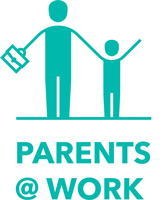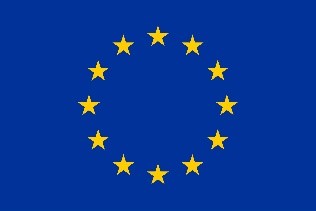Lexicon
This lexicon explains certain concepts from the toolkit and further clarifies the difference (or lack thereof) between certain concepts, in alphabetical order.
Birth leave – Paternity leave – Coparental leave
Fathers and coparents are entitled to a birth leave just after the birth of their child. Formerly known as "paternity leave", birth leave is a broader term, given that coparents are also entitled to this leave. Legally, the following people are eligible for birth leave:
- Either the father
- Or the coparent (such as the married or cohabiting - legally, or in a permanent and affective manner for three years - partner of the mother)
Birth leave runs for 20 days. Your employee can take these days at once or spread them out for the 4 months after the birth.
Breastfeeding leave – lactation leave – prophylactic leave
An employee who is breastfeeding her child can take breastfeeding leave. Breastfeeding leave follows straight on from pregnancy leave and is a period in which the employee is not working, so she can breastfeed her baby. There are two kinds of breastfeeding leave.
Breastfeeding mothers who are exposed to occupational risks are eligible for paid breastfeeding leave as part of maternity protection. Prophylactic breastfeeding leave or lactation leave is possible for up to 5 months after the birth. For prophylactic leave, the employee does not receive any wages from you, as the employer, but instead receives a replacement income from the health insurance fund.
Has no occupational risk been established by the occupational doctor, but the mother still wants to take breastfeeding leave? Then the decision is down to you as the employer. This would not then be the employee's right, but rather a favour you are doing her. See checklist 4 for this, where the various options are summarised.
Breastfeeding leave should not be confused with breastfeeding breaks. Every employee is entitled to breastfeeding breaks when she returns from pregnancy leave. She may take these for up to 9 months after the birth. If she works at least 7.5 hours per day, she is entitled to 2 breastfeeding breaks of half an hour each.
Carer’s leave
Introduced in 2022, this leave means that private sector employees and contractual public service employees are entitled to be absent from work for a maximum of five days - consecutive or otherwise - per calendar year, in order to provide personal care or support to a household or family member in need of significant care or support for a serious medical reason. This leave is deducted from the credit of leave for compelling reasons.
The following terms are hereby defined:
- Household member: any person cohabiting with the employee;
- Family member: the spouse of the employee or the person with whom the employee legally cohabits (Art. 1475 et seq. of the Old Civil Code), as well as blood relatives to the first degree of the employee (i.e. parents and children);
- A serious medical reason resulting in the need for significant care or support: any health condition, whether or not resulting from an illness or medical procedure, which is considered as such by the attending physician and for which the physician considers that significant care or support is needed;
- Care or support: any form of social, family or emotional assistance or care.
Circumstantial leave or ‘short leave’
An employee may take leave for certain reasons (family events, meeting civil duties or appearing in court). This is known as circumstantial leave or ‘short leave’. The precise events for which leave can be taken are laid down in law and must be respected. You can find a list of these on the FPS ELSD's website.
As the employer, you pay the employee's wages for that day, or short period.
Informal care
An informal carer is someone who:
- Provides care for someone who needs support due to an illness, disability or advanced age
- Has an affective relationship with the person being cared for. This means informal carers do not have to be relatives. For example, someone might care for a neighbour, partner, child, parent, friend, and so on.
- Provides help and care to the person requesting it on a frequent basis.
Informal care is not a profession; it is not organised by a company and is also not voluntary work. Informal care is generally something that happens to people and is not always a choice. The informal carer often does not know when or where the care will end either. It is difficult to predict. This means it is not always easy to combine informal care with work, and flexibility from you as the employer can be a welcome support.
Leave for urgent reasons, family leave or social leave
This concerns the same ‘collection’ of leave days – the concepts are synonymous with one another.
An employee may take leave for urgent reasons. These urgent reasons are defined as:
“An unforeseeable event, unrelated to work, that demands urgent and necessary intervention.”
Example:
- illness, accident or hospitalisation of a person living with the employee;
- damage to the employee's home from fire or a natural disaster;
- a summons to appear in person in court, where the employee is a party to the dispute;
- any other event that the employee and employer mutually agree to consider an urgent reason.
The leave for urgent reasons may not amount to more than 10 working days per year. The employee will not be paid for this day.
Pregnancy leave – maternity rest – postnatal leave
Pregnancy leave, maternity rest and postnatal leave are synonyms – all three refer to the same thing.
Maternity leave is the leave to which an employee is entitled in the period before and after she gives birth. As a general rule, it lasts for fifteen weeks and is divided up into ‘prenatal leave’ and ‘postnatal leave’.
Prenatal leave, also known as pregnancy leave, is the leave the expecting mother takes prior to the birth and lasts for a minimum of one week and a maximum of six. The period of rest beginning from the day of the birth, the postnatal rest or postnatal leave, lasts for a minimum of nine weeks and a maximum of 14.
If your employee is expecting a multiple birth, then prenatal leave can last for a maximum of eight weeks and postnatal leave for a minimum of nine and a maximum of 16 weeks.
Risk analysis
As an employer, you must guarantee the health, safety and welfare of your employees. You can use a dynamic risk management system to do so.
One of the core elements of this system is the risk analysis and the preventative measures arising from it. The risk analysis involves you as the employer being systematically and permanently alert to dangers and risk factors. You analyse practical working processes and situations with the aim of identifying risks and setting out preventative measures. These are developed into a universal prevention plan.
Your internal and external service for prevention and protection at work can support you with advice on this risk analysis.
A risk analysis is required in the context of pregnancy, among other things. It is important that the analysis contains specific measures for pregnant employees, such as a summary of the dangerous working conditions to which they may be exposed (these include chemical substances, lifting heavy objects and so on) and how to handle these.
Thematic leave
In order to better align work and private life or to care for a sick or terminally ill family member, your employees are entitled to thematic leave. There are four different kinds of thematic leave:
- Parental leave
- Palliative leave
- Leave for medical assistance
- Leave for informal care
Checklists 7 and 8 deal with these four systems of leave.

